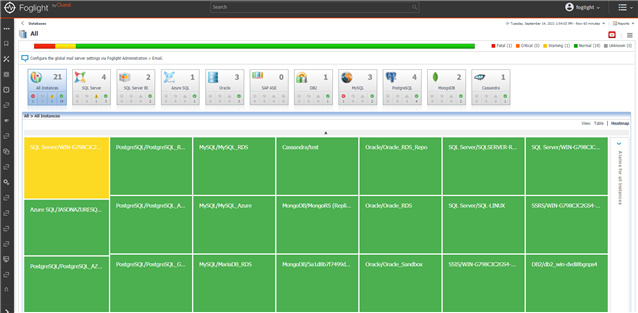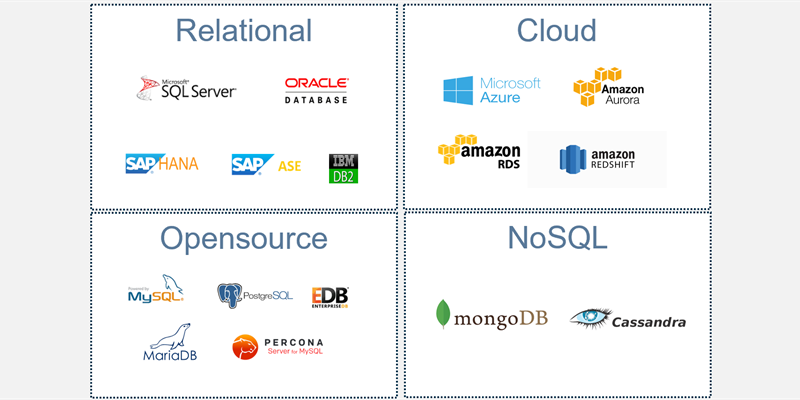- Microsoft SQL Server
- Oracle
- IBM DB2
- SAP ASE
- SAP Hana
- MySQL
- MariaDB
- PostgreSQL
- MongoDB
- Cassandra
- Amazon RedShift
- Amazon Aurora
Rather than bringing in separate solutions for each platform listed above, Foglight can cover them all in a single solution, requiring a single monitoring infrastructure, saving on VM's, repositories and storage. Foglight for Databases also only requires a single vendor contract, giving an IT organization the negotiating power of scale to secure not only a best of breed solution, but one that comes at an attractive price. Below you can see a screenshot of Foglight in action, proving cross platform coverage in a "single pane of glass".
To try Foglight out for yourself, head over to our virtual lab, where you can request a login and start evaluating Foglight within minutes. If your organization is looking to save money by centralizing your database monitoring, and consolidating the number of monitoring vendors that you work with, please reach out to see how we can help!




